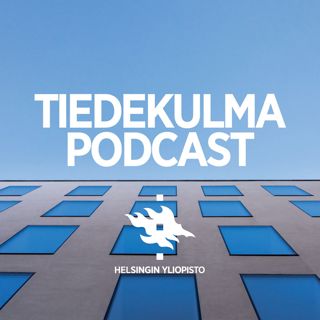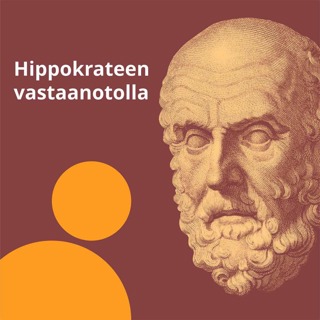
Engineered for Hurricanes: The “Three Little Pigs” Were Almost Right
Meteorology Matters examines the impact of hurricanes and extreme weather on residential buildings. Many Europeans believe their older buildings are stronger than American’s when in reality they’re not engineered to handle extremes, while survivorship bias may play a role in their perception. While many think the “Three Little Pigs” are the end all and be all of tough building examples, engineering plays a vital role in how those materials actually perform. Wood can actually perform better than concrete if it’s engineered better than brick for example. We analyze different building materials and construction techniques, exploring their resistance to high winds, storm surge, and flooding. Then dive into the importance of strong connections between building components, such as roofs and walls, and explore vulnerabilities in different types of construction, such as wood-framed homes. Highlighting the importance of understanding regional wind vulnerabilities and using building codes and design practices that meet local needs, research emphasizes the need to address the growing problem of residential building failures due to extreme weather events, particularly in areas prone to hurricanes and tornadoes.
21 Loka 202414min

NO, Hurricane Milton and Hurricane Helene were NOT Products of Weather Control but were Influenced by Climate Change
We debunk the claim that Hurricanes Helene and Milton were artificially engineered or manipulated by the government, HAARP, or other individuals or groups. Experts in meteorology, geoengineering, and atmospheric research confirm that the technology needed to control or create hurricanes does not exist. They attribute the intensity of these storms to natural processes, emphasizing the role of climate change in intensifying hurricanes. We further expose the spread of misinformation online, particularly among right-wing influencers and accounts, highlighting the potential dangers of these unfounded theories. They underscore the importance of critical thinking and reliance on credible scientific sources in the face of such misinformation. While climate change may be influencing hurricanes in some ways, most notably by rapid intensification, these conspiracy theories lack real evidence and have no basis in science.
19 Loka 20249min

Tampa Soap Opera: Hurricane Evacuation Defier “Lieutenant Dan” Arrested After Surviving Helene and Milton on Boat
Joseph Malinowski, is the Florida man who went viral for his decision to ride out Hurricanes Helene and Milton on his small sailboat. He was dubbed "Lieutenant Dan" after the character in Forrest Gump because he was missing a leg among other similarities with the movie character and garnered considerable attention online. While he initially received support and even donations, Malinowski was eventually arrested for trespassing and failing to appear in court. We detail his legal troubles, as well as the concerns of his daughter who fears the attention will negatively impact her father.
19 Loka 20249min

Florida Homeowners Sell Due to Hurricanes, Flooding and Out of Control Costs
Florida is facing a number of issues related to the insurance market and hurricanes. Insurance premiums are at an all-time high, with many homeowners facing an increase of up to 400%. The recent hurricanes, Helene and Milton, have caused billions of dollars in damage, further straining the insurance market. Some insurers are raising rates, while others are pulling out of the state entirely, leading to a shortage of insurance options. This is leading some homeowners to sell their properties at a loss, while others are hesitant to buy homes in Florida due to the risk of hurricanes. Despite the challenges, some residents are choosing to stay in Florida, citing the benefits of the state's weather, attractions, and overall lifestyle as outweighing the risks of hurricanes. There is also a growing interest in building hurricane-resistant homes, particularly domed structures, which have been proven to withstand even category 5 hurricanes. However, the high cost of building these homes presents a significant barrier for many.
18 Loka 202411min

Florida Always Near Top in Hurricane Building Codes
The Insurance Institute for Business & Home Safety (IBHS) has published a report titled “Rating the States” that evaluates the building code enforcement and administration systems, as well as contractor licensing practices in the 18 Atlantic and Gulf coast states most vulnerable to hurricanes. Each state is assigned a score from 0 to 100 based on the state’s adoption, implementation, and enforcement of building codes designed to minimize windstorm damage. The report highlights states with the most effective building code systems, identifies areas for improvement, and emphasizes the importance of adopting modern building codes to reduce the devastating impacts of hurricanes. The IBHS report provides valuable insights into the effectiveness of state-level building codes and serves as a resource for policymakers to make informed decisions regarding building code regulations.
17 Loka 20247min

Miami King Tides: Flooding this Weekend and Beyond
We explore the phenomenon of king tides and their increasing impact on coastal cities, particularly Miami. King tides are naturally occurring high tides that occur during specific lunar phases, amplified by the sun's gravitational pull. We discuss how these tides, exacerbated by rising sea levels due to climate change, are causing frequent sunny-day flooding in Miami and other coastal areas. We highlight the growing threat of these floods to infrastructure, businesses, and the overall well-being of coastal communities. The need can’t be emphasize enough for proactive planning and investment in mitigation strategies to address the escalating problem of king tides.
16 Loka 20247min

Mental Health Check: Hurricane Fatigue and PTSD After Helene and Milton
We examine the mental health consequences of hurricanes, specifically focusing on the hurricane fatigue, prevalence of post-traumatic stress disorder (PTSD), anxiety, and depression in hurricane-affected populations. We highlight the compounding effects of repeated hurricanes on mental health, as well as the role of environmental factors like green space and social support in mitigating those effects. We also provide recommendations for individuals and communities on how to cope with hurricane-related stress and trauma, and emphasize the importance of seeking professional help when needed.
15 Loka 202410min

Where Will Home Prices Go After Hurricanes Helene & Milton?
The sources discuss the impact of Hurricane Helene on the housing markets in Florida, particularly in the Tampa Bay area. Several articles note that, following the devastation caused by Hurricane Helene and previous hurricanes, home prices tend to increase, as wealthier buyers move in and take advantage of the reduced housing supply. However, this influx of wealthier buyers can displace longtime residents, causing a shift in the social fabric of the community. The articles also highlight the challenges faced by homeowners with limited resources and how insurance rates and government assistance contribute to these trends.
14 Loka 202413min



















